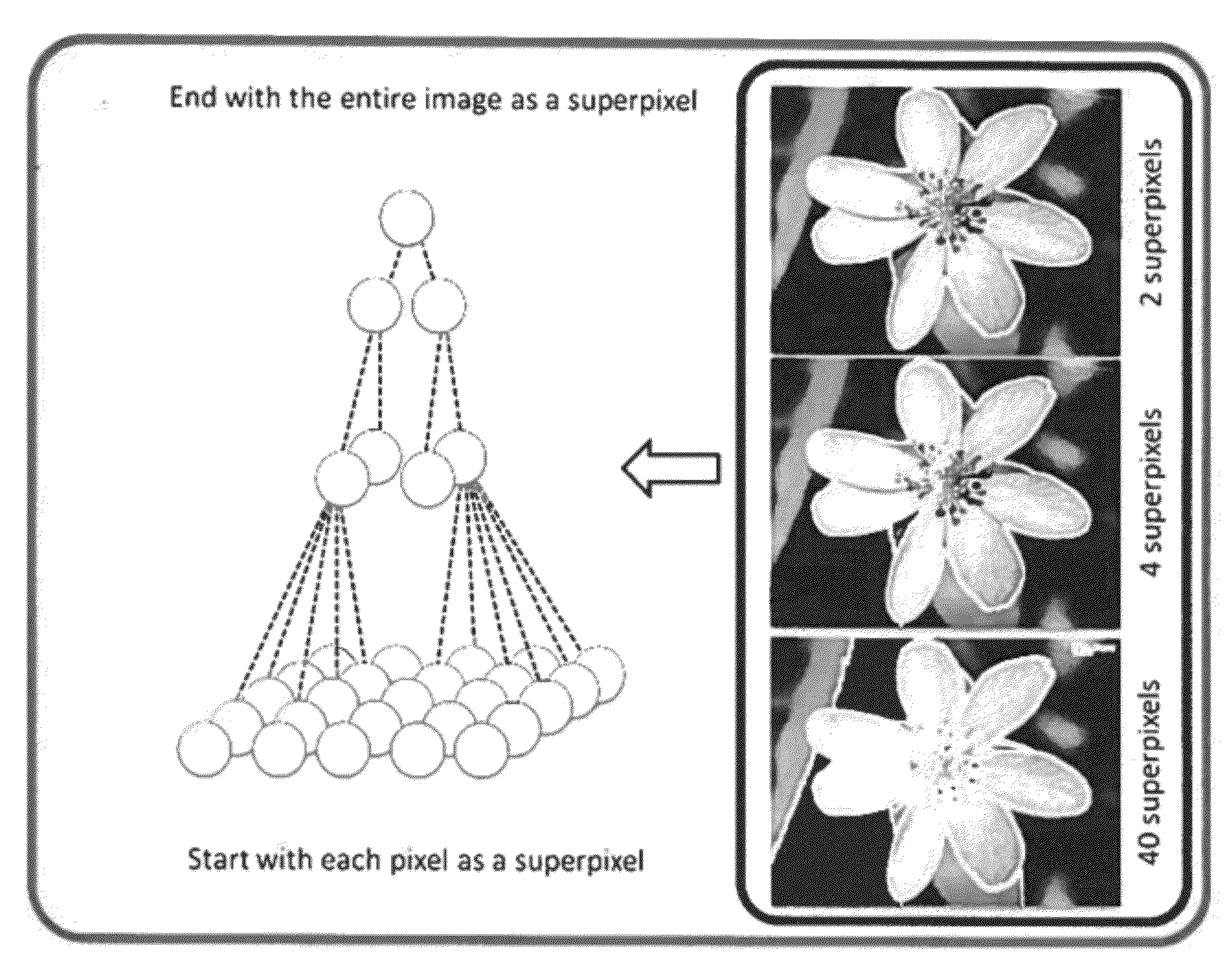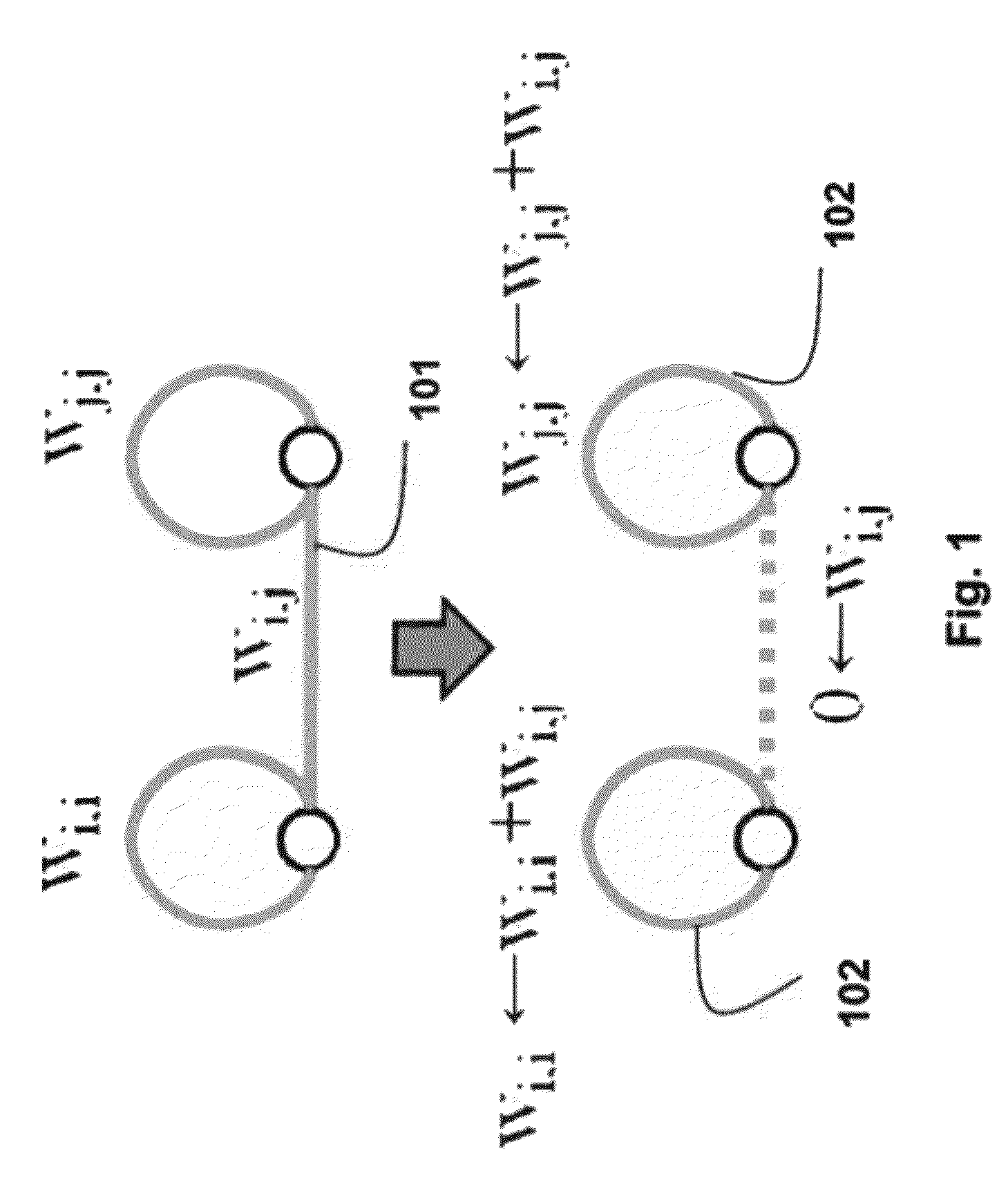Method for Segmenting Images Using Superpixels and Entropy Rate Clustering
a technology of superpixels and clustering, applied in image enhancement, image analysis, instruments, etc., can solve the problems of unsuitability for segmentation, many processes require intensive computation, and optimize for superpixel segmentation
- Summary
- Abstract
- Description
- Claims
- Application Information
AI Technical Summary
Benefits of technology
Problems solved by technology
Method used
Image
Examples
Embodiment Construction
Graph Representation
[0021]We use a conventional notation G=(V, E) for an undirected graph representing pixels in an image, where V is a vertex set corresponding to the pixels, and E is an edge set. The ith vertex of V is represented by vi, and the edge connecting vertices vi and vj is represented by ei,j. A weight function w gives the similarity between two vertices connected by an edge. In the undirected graph, the edge indices are interchangeable, ei,j=ej,i,and edge weights are symmetric, wi,j=wj,i.
[0022]A graph partition S refers to a partitioning of the set V into disjoint subsets S={S1, S2, . . . , SK}, such that Si∩Sj=Ø for i≠j, and ∪iSi=V. The graph partitioning is a subset selection problem. Our goal is to select a subset of edges A in the set E, such that the resulting graph (V, A) has K connected subgraphs (connected components). Each resulting subgraph corresponds to a superpixel.
Entropy
[0023]Entropy H measures an uncertainty of a random variable. Entropy o...
PUM
 Login to View More
Login to View More Abstract
Description
Claims
Application Information
 Login to View More
Login to View More - R&D
- Intellectual Property
- Life Sciences
- Materials
- Tech Scout
- Unparalleled Data Quality
- Higher Quality Content
- 60% Fewer Hallucinations
Browse by: Latest US Patents, China's latest patents, Technical Efficacy Thesaurus, Application Domain, Technology Topic, Popular Technical Reports.
© 2025 PatSnap. All rights reserved.Legal|Privacy policy|Modern Slavery Act Transparency Statement|Sitemap|About US| Contact US: help@patsnap.com



